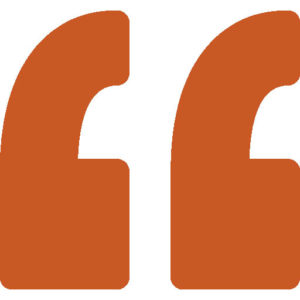Letter from Kirtee Shah, HIC Emeritus President (1999 – 2003) to Maimunah Mohd Sharif, Director General of UN Habitat.
The letter seeks corrective action during the World Urban Forum in Abu Dabhi . The corrective action is to pay some attention to the rural habitat sector which, despite its size and need for attention, continues to get neglected in all forms and in the global human settlements forums.
TO The Director General UN Habitat
United Nations Office Nairobi
Dear Maimunah Binti Mohd Sharif Ji,
In India, while addressing a person we admire, respect and hold in high esteem we add the suffix “JI” to the name. As you deserve that respect and admiration with where you have reached and what you have achieved personally and what you are doing and will do to the human settlements sector in general and to its much-in- need-of- change-and—improvement –aspects, in particular, I have chosen to address you in this manner.
It was great pleasure listening to you and meeting you recently, even if briefly, in Penang during the Asia Pacific Urban Forum 7. As suggested by you, I did send an email to your secretary, Mr. Lars Stordal, on 14 October, 2019, requesting for your time to meet. I did not hear in response. I do reckon that with some 6000 participants, multiple events and engagements and everyone seeking your word and presence, I am not surprised you did not have time to meet.

However, as what we want to convey is rather important and should be done now I am seeking to reach you through this mail. Trust you will get to see it and find time to respond and if convinced and possible, act.
The matter relates to the forthcoming World Urban Forum in Abu Dabhi in February next year and whether you could use it to do certain things that could not be done in earlier events such as APUF 7 and even Habitat 3 in Quito.
1. It is about the continuing neglect of the rural habitat sector and its challenges by the UN Habitat ( sorry to be saying this) and other related organizations which are putting together impressive world events to raise awareness, focus attention, mobilise opinion, launch campaigns and lobby policies and approaches for the world community—for all stakeholders including the national governments. It is hard to understand: why this neglect? Even while recognising that the world has turned half urban, it automatically means it is half rural yet. Even the projections that highlight strong urbanization trends by 2050, suggest that 3.1 billion of the global population will be rural then. Closer home, 66.6 percent of South Asia was rural in 2016, when UN Habitat and others organised Habitat 3 (exclusively urban focused) and projected the Urban Agenda for the world to follow. Even if it is argued that the worrying signals that the rapid urbanization conveys on the global sustainability ( cities occupy just 2 percent of the land but consume 75 percent of the global resources and throw 75 percent of the global waste in the environment) , on one hand, and the need to optimise on the urban productivity ( 65 to 70 percent of the GDP from the urban centres; I just read that New York city’s GDP is 2.5 Trillion US Dollars compared to India’s, as a whole, at 2.73 Trillion Dollars) , on the other, justify the urban focus, should not the declining rural productivity, forced urban-wards migration due to rural economic distress, possible ill effects of the climate change on agriculture and increased frequency and intensity of natural disasters on rural populations , on the one hand, and relatively more sustainable ways of rural living , on the other, get even a small share of global attention through organizations like UN Habitat?
2. In all humility and with due respect can one ask a question to UN Habitat and thereby to you ? UN Habitat’s mandate is Human Settlements, not Urban Settlements alone. If that is true, what has UN Habitat done for the rural settlements in the past 30 years? We know the Habitat 3, The Urban Agenda, The APUF 7 and we will soon see the World Urban Forum in Abu Dabhi. That is all urban. All exclusively urban. Does the rural sector exist? Does it have development challenges? Does it suffer problems of inadequate shelter, water scarcity, poverty, neglect, poor infrastructure, economic distress, investment gaps, low farm productivity, technological backwardness, social inequality, etc.? Is there a need to address them in some form, some time? Is there a need to focus attention of the national governments, international agencies like yours , professionals, civil society on something that is rural? Will you agree that as things are going for the past three decades there has not only been an urban tilt but rural neglect in what UN Habitat has done? Kindly neglect my ignorance if that is not the case.
3. This is not what I am saying alone and now. This is what the “ Delhi Declaration: A Civil Society Contribution to Habitat III “ said in October 2016. And I quote. Under the Caption ‘Recognising the Rural Reality in Urbanising World’ it says the following:
- “Even if it is a voice of one in a crowd and knowing full well that they call Habitat 3 the “Cities’ Summit”, we in India cannot afford to see the urbanization and urban development in isolation from the rural life and rural settlements development challenge. Not only because 32 % urban automatically means 68 % rural and if 350 million urban dwellers are living in over 7000 cities and towns, some 850 million are there in over 620,000 villages. The predominance of the rural reality cannot be denied despite heavy urbanization trends. Refusing to see the inter connections, inter dependence and continuity, in the silos mentality, is causing much damage. This is not only an Indian but a dominant South Asian reality even under pronounced urbanization trends. And even if others choose to see it in watertight compartments, we in India should know that our urban future is linked to how we handle the rural challenge.”
- “With the current urban trends persisting, even exacerbating, what does India do with its 6.20 lakh villages? Lock them up? In there today live over 850 million people, 75% of the households earning less than Rs 5000 a month. They must be fed, employed, educated and helped to pull out of the poverty, while share of the agriculture economy has plummeted to less than 2%, out of 7 to 8 % overall growth. Under the loud noise that the urban world makes, the productivity argument it advances (65% of the growth happening in the urban areas, likely to go up to 75% in 10/15 more years), the part of the irreversible global trends it is projected as, and with the major decision makers mostly urban based or urban biased, the issues have been pushed under the carpet and the debate has almost vanished. India’s future cannot be built on this key issue being seen as a non-issue. The urban must be seen and planned with the rural. How do we do it?”
5. We requested UN Habitat to organise a global event in “two or three years after Habitat III to ‘ develop a New Rural Agenda to complement the New Urban Agenda and ‘ both agendas simultaneously helping to achieve the globally ratified Sustainable Development Goals (SDGs).” That did not happen. And even if we loudly present it again, it may not happen.
6. This letter , therefore, is to suggest to you to do something to remedy the situation now– and not in close or distant future– at Abu Dabhi World Urban Forum early next year. It is and it must remain the “Urban” Forum. But within that you may consider doing the following.
6.1 Suggest interested countries in Asia, Africa and Latin America to produce the Status Report on Rural Habitat in their respective countries and their vision and plans for its development by 2030
6.2 Run a parallel events at WUF at Abu Dabhi, with themes and sub themes, on the Rural Habitat Challenges and Opportunities.
6.3 Invite , through appropriate channels, organizations, especially academic, research and civil society organizations, working in rural development sector to participate and contribute relevant perspectives.
6.4 Do whatever possible to get the rural engagement at the forthcoming WUF content rich and creative.
7. That time is not enough would be a likely argument, even if the general thrust of this suggestion is accepted. That is where your leadership will come in. It is more than 100 days yet. And , as you well know, with motivated people in charge it is doable.
8. With PMGAY ( Prime Minister’s Rural Housing Program) under which some 30 million rural houses are targeted to be constructed in the Indian villages by 2022; over 100 million toilets already constructed in the past 5 years, a majority of them in the villages; an ambitious rural employment guarantee program ( MNREGA), and the country’s intent to doubling the income of the farmers in five years , the Government of India could be requested to lead this and give a concrete shape to the suggestion. We are confident that with your decision to move on this matter there will be many to contribute. It is our conviction that what is suggested here is not a minority view. And even if it is , the numbers take nothing away from its inherent merit. Who could fault UN Habitat if it sees the global urban challenge , especially that of the developing world , with its rural backward forward linkages?

We requested UN Habitat to organise a global event in “two or three years after Habitat III to ‘ develop a New Rural Agenda to complement the New Urban Agenda and ‘ both agendas simultaneously helping to achieve the globally ratified Sustainable Development Goals (SDGs).” That did not happen. And even if we loudly present it again, it may not happen.
Looking forward to hearing from you and with very warm regards
Kirtee Shah
Inhaf ( Habitat Forum)